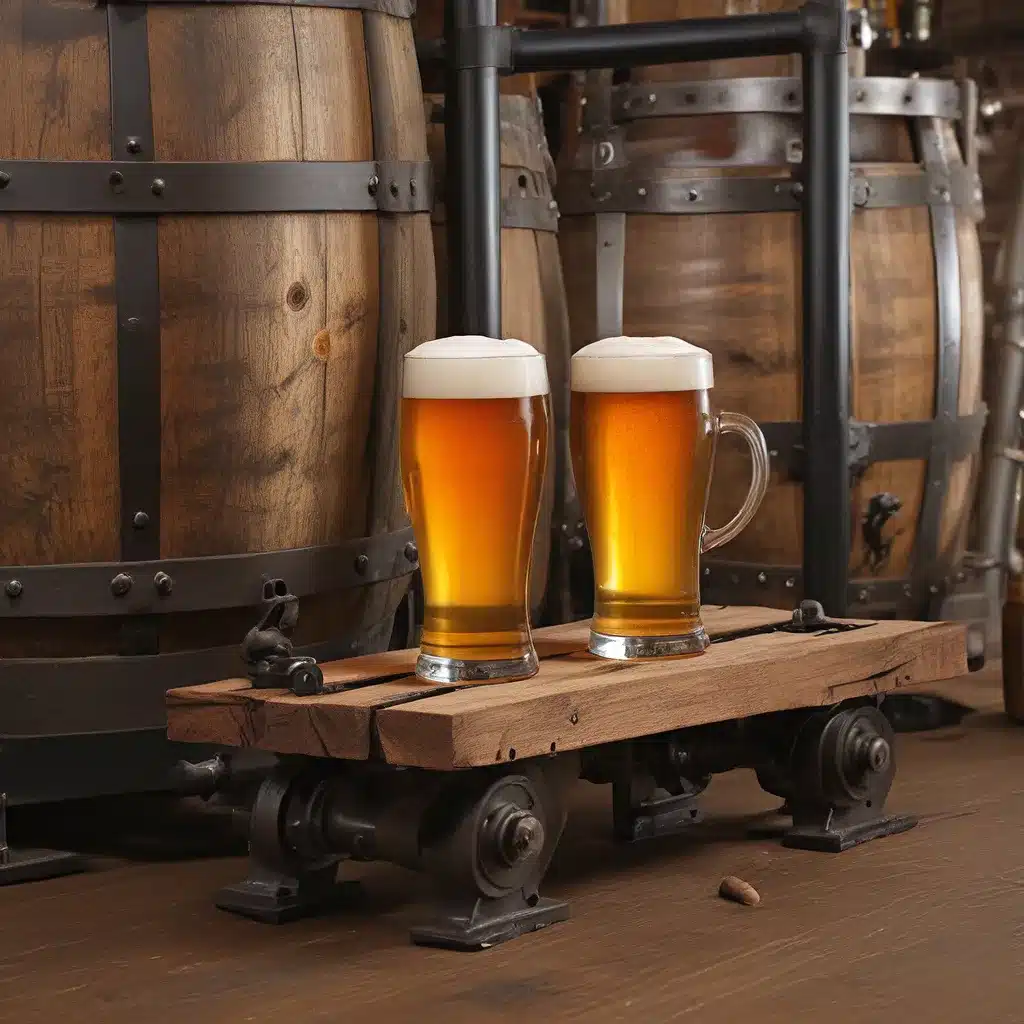
Raising a Glass to the Past: How Beer Fueled the Engines of Progress
Have you ever stopped to ponder the deeper ties between beer and the Industrial Revolution? I certainly hadn’t, until I embarked on a journey to uncover this unexpected historical connection. What began as a casual interest quickly spiraled into a full-blown obsession, as I unearthed layer after layer of fascinating insights that shed new light on two seemingly disparate realms.
As an architectural historian with a penchant for exploring industrial heritage, I’ve always been intrigued by the ways in which built environments reflect the larger social, economic, and technological forces at play. But it wasn’t until I stumbled upon the UNESCO-designated ‘Sites of the Meiji Industrial Revolution’ in Japan that the pivotal role of beer in fueling industrialization really came into focus.
Liquid Gold: The Vital Role of Beer in the Industrial Revolution
As I delved deeper into the history, a remarkable picture began to emerge. The Industrial Revolution, that epoch-defining era of rapid technological and economic transformation, was in no small part powered by the humble pint of beer. It’s a connection that, upon reflection, seems almost obvious – yet one that has largely escaped the mainstream historical narrative.
You see, beer was much more than just a refreshing libation for the factory workers of the 19th century. It was a lifeline, providing sustenance, hydration, and vital sustenance in the face of the grueling demands of the industrializing world. In an age before the widespread adoption of clean water supplies and sanitation systems, beer offered a reliable and relatively safe alternative – one that was, quite literally, the fuel that kept the engines of progress chugging along.
But the relationship between beer and industrialization went far beyond mere sustenance. The production of beer itself became an integral cog in the industrial machine, with breweries serving as hubs of innovation and technological advancement. As the demand for beer skyrocketed, brewers were forced to adapt and optimize their operations, giving rise to a wave of engineering breakthroughs that would ultimately reshape the broader industrial landscape.
The Brew-Ha-Ha of Technological Progress
Take, for instance, the advent of the steam engine. While the steam engine is often associated with the textile industry or the locomotive, its origins can be traced back to the beer breweries of the 18th century. Brewers, in their relentless pursuit of greater efficiency and output, were among the first to adopt these revolutionary new machines, using them to power their boilers, their fermentation tanks, and their distribution networks.
In fact, the very first commercial steam engine was installed in a brewery in 1784, a full decade before its widespread adoption in other industries. And as the technology continued to evolve, brewers were quick to incorporate the latest advancements, driving innovation and inspiring cross-pollination between different sectors of the economy.
But the impact of beer on the Industrial Revolution extended far beyond the technological realm. The sheer scale of beer production and consumption during this era profoundly shaped the built environment, giving rise to a new era of industrial architecture that still echoes through our cities today.
Architectural Revelations: The Brew Houses of the Industrial Age
As I explored the UNESCO-designated ‘Sites of the Meiji Industrial Revolution’ in Japan, I was struck by the architectural parallels between these industrial sites and the grand, imposing brew houses that dotted the landscape of 19th-century Europe and North America. The same rationalized design principles, the same emphasis on efficiency and functionality, the same bold expression of industrial might.
It was as if the beer barons of the era had planted the seeds for a new architectural language – one that would come to define the very essence of the Industrial Revolution. And as I delved deeper, I began to appreciate the symbiotic relationship between beer and the built environment, each shaping the other in an endless cycle of innovation and adaptation.
Brewing Up a Revolution: The Societal Impact of Beer
But the story of beer and the Industrial Revolution doesn’t end there. For as the factories and workshops of the era began to churn out an ever-growing array of consumer goods, the social impact of beer became increasingly profound.
Beer, once the sustenance of the working class, now became a symbol of their newfound prosperity and purchasing power. The proliferation of pubs, taverns, and beer halls not only quenched the thirst of the industrialized masses but also served as hubs of community, political discourse, and cultural exchange.
Indeed, the very culture of the Industrial Revolution was, in many ways, brewed within the walls of these drinking establishments. It was here that workers, entrepreneurs, and visionaries would gather, sharing ideas, debating the issues of the day, and plotting the course of the future.
Raising a Glass to the Future
As I sit here, nursing a frothy pint and reflecting on my journey of discovery, I can’t help but marvel at the enduring legacy of beer’s role in the Industrial Revolution. From the steam engines that powered the factories to the architectural marvels that defined the urban landscape, the humble brew has left an indelible mark on the very fabric of our modern world.
And who knows, perhaps the next great technological breakthrough or societal transformation is just waiting to be uncovered in the depths of a well-crafted ale. After all, as the good folks at The Up & Under Pub would undoubtedly agree, sometimes the most profound insights can be found at the bottom of a glass.
So the next time you raise a glass, take a moment to salute the unsung heroes of the Industrial Revolution – the brewers, the innovators, the visionaries who helped shape the world we live in today. Cheers to you, my friends, and to the endless possibilities that await us in the ever-evolving story of beer and the human experience.

